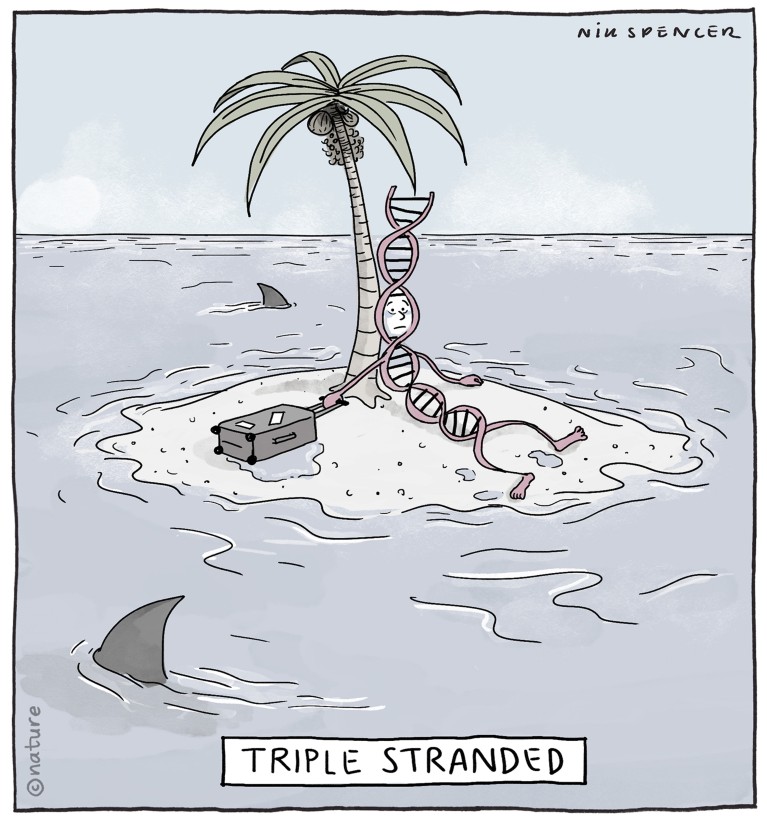Hello Nature readers, would you like to get this Briefing in your inbox free every day? Sign up here.

Scientific simulation of a black hole consuming a neutron star.Credit: A. Tonita, L. Rezzolla, F. Pannarale
Ripples hint at black hole eating a star
Gravitational waves might have just delivered the first sighting of a black hole devouring a neutron star. On Friday, the twin detectors of the Laser Interferometer Gravitational-wave Observatory (LIGO) in the United States and the Virgo observatory in Italy reported a burst of waves of an unusual type. If the ripples are confirmed, it would be the first evidence of the existence of such binary systems. The news comes just a day after astronomers detected gravitational waves from a merger of two neutron stars, a second example of an event that had us all in a tizzy back in 2017.
5G networks threaten weather forecasts
Next-generation 5G mobile wireless technology could trick Earth-observing satellites into making inaccurate observations. Water vapour in the atmosphere emits a faint signal at the 23.8-gigahertz frequency. A 5G station transmitting at nearly the same frequency would send a false signal that would be indistinguishable from natural vapour, leading to less-accurate weather forecasts. “This is the first time we’ve seen a threat to what I’d call the crown jewels of our frequencies — the ones that we absolutely must defend come what may,” says meteorologist Stephen English.
Nuclear agency gives JASON a lifeline
Earlier this month, we told you that the US Department of Defense had abruptly ended a long-standing relationship with JASON, an elite group of experts that has advised the government since the height of the cold war. Now we know that, just days before it was set to shut down, JASON has been given a reprieve until January 2020 with funding from the National Nuclear Security Administration (NNSA). The NNSA said JASON’s work was essential for maintaining the country’s nuclear weapons and preventing nuclear proliferation.
NASA carbon observatory poised for launch
NASA is poised to launch the US$110-million Orbiting Carbon Observatory-3 (OCO-3) on Wednesday. The probe will be attached to the outside of the International Space Station. OCO-3 will gather the most detailed observations yet of the places on Earth that emit or store carbon, monitoring areas of the planet that aren’t easily surveyed by satellites.
Chinese quantum prize rewards international stars
A private Chinese foundation has announced the first winners of its prize for quantum scientists. The Micius Foundation announced the winners for the 2018 and 2019 prizes, with six winners for each year splitting the 6 million yuan (US$890,000) annual award. The only Chinese winner was physicist Pan Jian-Wei, the main architect of the world’s first quantum-communications space satellite, also called Micius. The prize is recognition that Chinese quantum science is “part of an international family”, says theoretical physicist Peter Zoller, one of the 2018 prizewinners for his theoretical work on quantum computation.
FEATURES & OPINION
WHO to put global south in the driver’s seat
Billions of people rely on the norms and standards for global health set by the World Health Organization (WHO). The chief scientist of its new science division, Soumya Swaminathan, explains how the agency will encourage innovation, promote open data and hand the power to scientists from the global south.
The day DNA ruled Nature
On 25 April 1953, James Watson and Francis Crick published their iconic paper proposing a double-helix structure for DNA in Nature. Fewer people recall that there were actually three papers about DNA in that issue. In this PastCast (first broadcast in April 2013), discover the evidence that inspired the theory, learn how the papers were received at the time, and hear from one scientist who was actually there: co-author of one of the DNA papers, the late Raymond Gosling.
Discover a selection of interesting, illuminating, entertaining and sometimes controversial articles from the 150 years of Nature (on Facebook, but no Facebook account is required)
How to see quantum weirdness with our own eyes
“The human visual system works surprisingly well as a quantum detector,” says physicist Rebecca Holmes: the rod cells in our eyes are so sensitive that they can be activated by a single photon. Holmes explains how this “unique biological measurement device” could allow us to explore some of the most bizarre features of quantum physics, from entanglement to local realism.
QUIRKS OF NATURE

